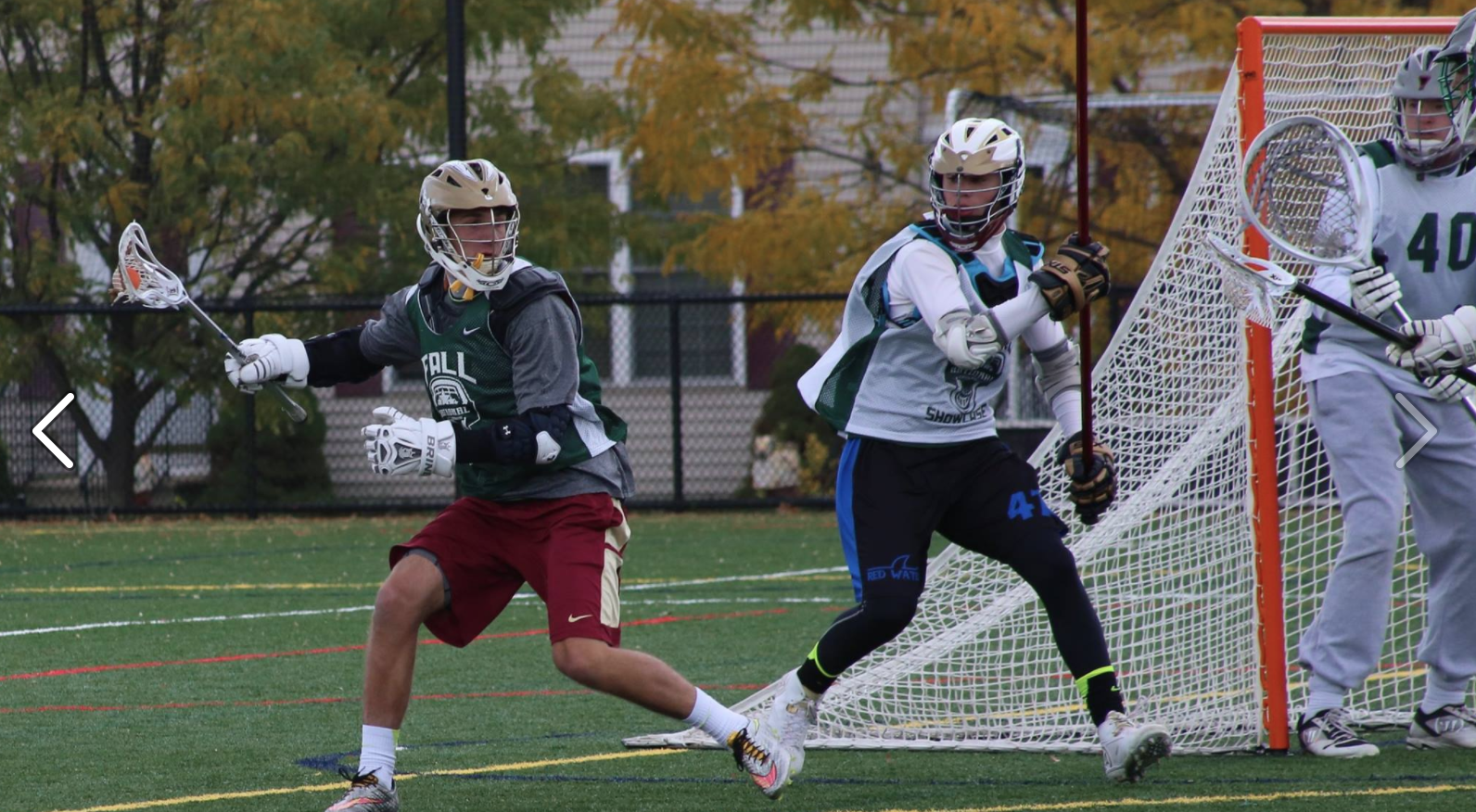A Unique Approach to In-Season Training for Lacrosse
By: Corey Crane

A proper in-season strength and conditioning plan has multiple dimensions. It is the most important time of the year to train. So many programs around the nation either stop lifting at the beginning of the season or do not place any emphasis on it at all. The primary goal of an in-season resistance program is to further increase or at least maintain power, strength and endurance. Here at Army to prevent in-season detraining, we consistently lift two times per week (i.e. Monday’s and Wednesday’s). Most of our games are played on a Saturday so that gives us plenty of time to rest and recovery for the game.
There are so many challenges when designing a proper in-season program. You have to look at all the other aspects of the player’s life (i.e. travel schedule, academic responsibilities, nutrition, personal issues and the military side of their development). I stand by the philosophy of less is better! Overtraining here at the Academy is very common that once they are in this state, it could take months for them to fully recover. Therefore, I am consistently communicating with the coaches, trainers and other personnel that have a direct impact on the player’s workload.
Before starting any in-season program, I have to examine the specific goals developed by the coaches and the team. Everyone needs to be on the same page ranging from the head coach, all the assistants, team trainer, strength coach and other influential support staff. This cohesiveness can really make a difference in the close games and have a successful season.
My training plan is based on these four major goals:
- Injury prevention – to reduce the incidence of all lacrosse-related injuries.
- Performance enhancement – to increase power, strength, endurance, speed, agility and quickness.
- Team building – to build leadership, self-esteem and confidence among all players.
- Mental toughness – our goal is to be the toughest team in the nation. Therefore I implement many challenging techniques to push them past their comfort zone.
Due to the academic schedule here at the Academy (7am until 2:45pm), practice starts at 3:15 and usually runs to approximately 5:30pm. The team lifts as a whole unit after practice. Monday is a full-body workout that focuses on maximal strength and power. I utilize a technique called “Complex Training” where I combine a strength movement with a plyometric exercise. The theory behind complex training is that the strength exercise stimulates the nervous system so that more fast twitch muscle fibers can be recruited for the plyometric exercise. It should be done early in the week to allow complete recovery before competition. An example would be performing a set of squats and then with no rest super setting squat jumps making sure the movement patterns are similar between the two exercises. This can be done for every plane or muscle group.
On Wednesday, I incorporate H.I.T. (High Intensity Training) techniques and the primarily focus is on strength endurance. The goal is 10 to 12 repetition maximum (RM) on each set. This implies that set is performed to momentary voluntary fatigue between 10 and 12 reps. I rest the lower body and only train the upper body and core – this will prevent any soreness in the legs prior to the game on Saturday.
Our program is based on the basic principle of progressive overload. It refers to the practice of continually increasing the stress placed on the muscle as it becomes capable of producing more force. There are several methods to increase the overload placed on the body. The amount of weight performed for a certain number of repetitions can be increased. Performing more sets and repetitions (i.e. more volume) is another way to progressively overload the body.
We begin each workout with foot speed and quickness drills on the agility ladder and then move to dynamic flexibility routine. The focus here is to increase core body temperature and blood flow to the major muscle groups. Following each lift, we spend 10 minutes static stretching, re-hydrating, and taking a nutritional energy-recovery shake.
The following is an example of our two-day, in-season training program:
Monday:
Warm-up:
Agility ladder and dynamic flexibility
Lower Body:
Overhead Squats 1 x 10
Barbell Squats 3 x 5
Super set squats with 5 bodyweight squat jumps!
Romanian Deadlifts (RDL’s) 2 x 6
Super set RDL’s with 6 total split squat jumps!
Band Ankle Complex 1 x 20
Upper Body:
Shoulder Combo 1 x 10
Barbell Bench Press 3 x 5
Super set bench press with 5 med ball power drops!
Underhand Lat Pulldowns 3 x 6
Super set pulldowns with 5 med ball pullover passes!
Core:
Med Ball AB Routine (40’s) 2 x 40
Weighted Hyperextensions 1 x 10
Cool-down:
Static Stretching 10 minutes
Post-workout Nutrition Shake
Wednesday:
Warm-up:
Agility ladder and dynamic flexibility
Lower Body:
NONE – ACTIVE REST
Upper Body:
Shoulder Combo 1 x 10
Hammer Bench Press 1 x 10-12
Hammer Iso Row 1 x 10-12
Hammer Incline Press 1 x 10-12
Hammer High Row 1 x 10-12
Hammer Shoulder Press 1 x 10-12
Hammer Lateral Raise 1 x 10-12
Bodyweight Chin-ups Max Reps
Bodyweight Dips Max Reps
Core:
Core Stabilization 4 x 1 minute each side
Cool-down:
Static Stretching 10 minutes
Post-workout Nutrition Shake
The primary objective of the in-season program for our lacrosse team is to maintain the strength and conditioning levels that they attained during the off-season. The first day after finishing a weekly competition is the hardest and most intense workout. In the second day of training, there is a decrease in training volume to prevent any muscle soreness that may interfere with the following game. We don’t do any extra conditioning outside of practice during the in-season. This will help prevent overtraining and other overuse injuries.
For more information on lacrosse training and Corey’s new eBook “Winning the One Goal Game”, visit www.lacrosse-strategies.com.
Recommended Athletes' Acceleration Products
About The Author:
Corey Crane, the Associate Head Strength and Conditioning Coach, has been working at the United States Military Academy (Army) for a total of 5 years. At Army, Crane is responsible for the design and implementation of the strength and conditioning programs for lacrosse, hockey, volleyball and assisting with football. The three years that he has been working with the Army lacrosse team (2003, 2004 & 2005), they have participated in the NCAA tournament. During 2006, Crane accepted a position as the Head Strength and Conditioning Coach at Western Illinois University in Macomb, Illinois where he was in charge of the strength and conditioning programs for 20 varsity sports. In April of 2006, Crane moved back to West Point and is continuing working with the Army Lacrosse Team.
Crane earned both his bachelor’s degree in community health education and master’s degree in exercise science and psychomotor behavior from the University of Northern Iowa. He is certified through the National Strength and Conditioning Association and the Collegiate Strength and Conditioning Coaches Association. In addition, he is a Level 1 certified Track and Field Coach.
—————————————————————————–



0 Comments for “A Unique Approach to In-Season Training for Lacrosse”